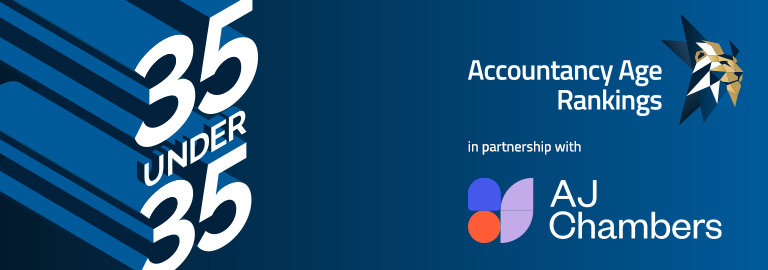Last year, the British public gave approximately £6.76bn to charity out of their own pockets, but most people would still rather pop a pound in a collection tin than make the most of their gift by thinking about how they should give.
By simply changing the donation method, that £6.76bn could have been increased by around £500m, providing donors with generous personal tax relief at the same time.
Accountants are ideally positioned to prompt clients and their own organisation about the tax incentives, yet in a survey of UK accountants in 2001, around 51% said they never or hardly ever gave advice on tax-effective giving to their clients.
Since the tax incentives of gift aid, payroll giving, share giving, charitable trusts and legacies are all relatively straightforward, I doubt the reason is a lack of understanding, but is more likely to be a lack of perception that advice on charitable giving is something that lies within an accountant’s role.
Giving in the UK tends to be a deeply personal process, and not one that many people would consider part of their working lives. Perhaps this very British reticence to discuss our generosity with others leaves accountancy professionals reluctant to probe into clients’ charitable concerns.
However, the good news is that advisers are starting to overcome these fears and tax-effective giving is increasingly being recognised and employed as a strategic asset management tool. Furthermore, advisers are now recognising the benefits of questioning clients about their key concerns and beliefs as an opportunity to strengthen client-adviser relationships.
So, what can accountants do to make the most of these tax-effective giving methods for clients and within their own organisations?
At the most basic level, accountants can offer advice on the tax incentives of giving to charity. However, by getting involved in payroll giving, advisers can lead by example and gain business benefits in the process.
As an employee donations scheme, payroll giving has virtually no costs, enabling staff to donate to whichever charity they wish to support straight from their gross pay. The donor receives instant tax relief on their donations and, as an extra incentive, the government adds a further 10% to all payroll donations. So, for example, a £10 gift would cost a higher rate taxpayer as little as £6 (or £7.80 for standard rate taxpayers), but would actually be worth £11 to the charity – which is almost double the cost to the donor.
In 2002-03, £86m was raised for charities through payroll giving alone, but only 1% of UK companies currently offer the scheme to employees. Meanwhile in the US, payroll giving has become a mainstream donation method, with more than 35% of employees giving regularly to charity in this way.
With payroll giving being such an effective scheme in boosting income to charities and enabling employees to claim tax relief on their donations, why aren’t more accountants advising clients or their own organisation to get involved?
Recent research of leading UK businesses that offer the payroll scheme has identified a host of core benefits, and 96% of those surveyed thought that it was something a good employer should offer. The most highly recognised benefits of offering such a scheme were that it presented an improved company image and boosted its corporate social responsibility profile.
But the same research also showed that businesses felt strongly that their employees enjoyed participating in the scheme and it improved staff morale, raised retention and aided recruitment of new members.
The extent to which companies perceive business benefits from payroll giving correlates directly with levels of staff participation. For example, companies that had high levels of participation reported business benefits more frequently than the others, emphasising the need for businesses not only to launch the scheme but also to promote it.
For larger companies that offer a community involvement programme, payroll giving plays a key role in enabling businesses to illustrate their commitment to causes close to the heart of their employees. And for smaller organisations without the resources to commit to making substantial donations to charity, payroll giving is an easy way to support charities at virtually no cost.
The scheme is administered through a payroll-giving agency that charges a small fee – a matter of just a few percent – which can be deducted from the donations, unless the employer chooses to pay this fee. Furthermore, since donations are deducted straight from the employee’s salary, it requires very little administrative resources.
In this light, payroll giving emerges as a lost opportunity for companies looking to offer a valuable service to their employees that would enable them to make tax-effective and vital support for charities. Payroll giving is a benefit to offer employees, boosting the corporate image and attracting new clients. It makes good business sense and this means profit.
Currently, only about 20% of donations are given tax-effectively, leaving charities short of an estimated £550m a year. With dwindling corporate donations, plus the stock market volatility adding further uncertainty to their ability to support chosen causes – charities need this extra income now more than ever.
Payroll giving presents an ideal opportunity for accountants to encourage their own organisation – and their clients’ – to lead by example in providing a reliable income stream to charities and from which they can spur on other companies and clients to get involved.
Terri Hathaway is campaign manager at The Giving Campaign.
– The Giving Campaign has produced a free tool kit to help companies set up or boost an existing payroll giving scheme. For your free copy or for further information, call 020 7930 3154 or visit www.givingcampaign.org.uk.
